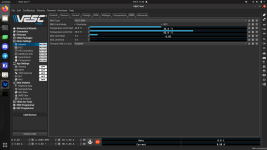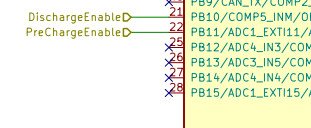The SS is not intended to be a single port BMS it has separate charge & discharge paths.
-There is only one UART, use CAN instead.
-Yes I2C can be used for IO expension
- Using 2 OZ in copper at least for enabling higher current
- Some high power surge wirewound resistor do exist for precharging. Mounted on the PCB
- Yes many external current measurement is possible with I2C adressing
- Using 58V rated fuse, not 32V
- Tested the fuse to a certain limit with up to 20S packs, the fuse still does it's job, but it is not intended to be a perfect solution either. Some specialized fuses can be more expensive than this BMS
- SS is intended to be used for small battery pack in LEV, there is Master-LV for larger battery pack. TVS on the board as well to limit surge voltage during a short. TVS are SMB size, so you can guess the approx. inductance limit for the TVS to bring protection.
- Not open source hardware
- Loose wire detection can be triggered with manual command for checking the BMS. Other safety commands are done in the main loop.
The SS-lite had little demand and now that the firmware allow the smaller XLITE do get pack current reading over CAN bus, there was little reason to keep the larger SS-LITE. It can still be produced upon request
-There is only one UART, use CAN instead.
-Yes I2C can be used for IO expension
- Using 2 OZ in copper at least for enabling higher current
- Some high power surge wirewound resistor do exist for precharging. Mounted on the PCB
- Yes many external current measurement is possible with I2C adressing
- Using 58V rated fuse, not 32V
- Tested the fuse to a certain limit with up to 20S packs, the fuse still does it's job, but it is not intended to be a perfect solution either. Some specialized fuses can be more expensive than this BMS
- SS is intended to be used for small battery pack in LEV, there is Master-LV for larger battery pack. TVS on the board as well to limit surge voltage during a short. TVS are SMB size, so you can guess the approx. inductance limit for the TVS to bring protection.
- Not open source hardware
- Loose wire detection can be triggered with manual command for checking the BMS. Other safety commands are done in the main loop.
The SS-lite had little demand and now that the firmware allow the smaller XLITE do get pack current reading over CAN bus, there was little reason to keep the larger SS-LITE. It can still be produced upon request




